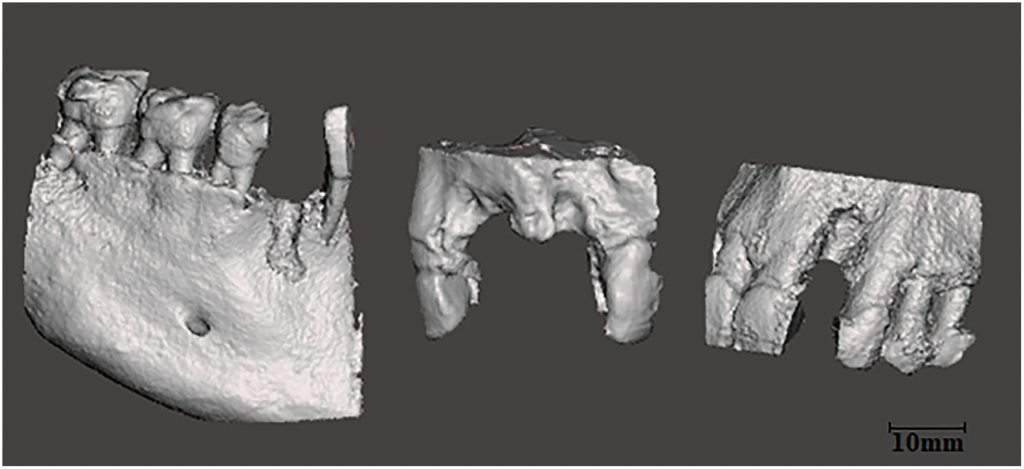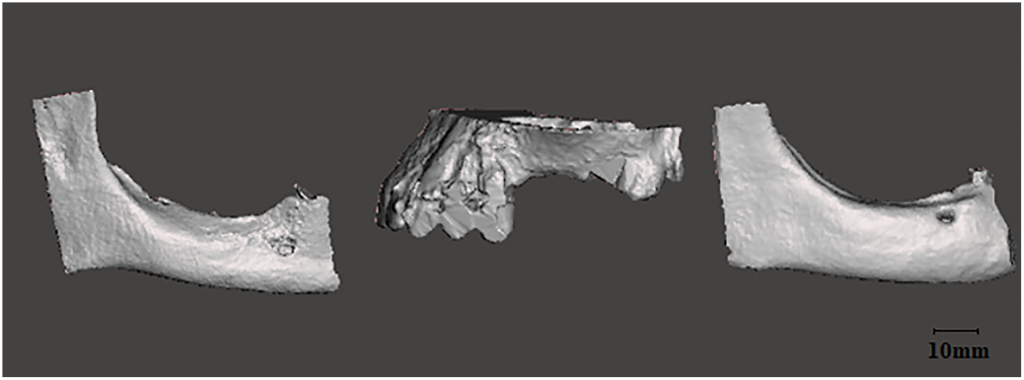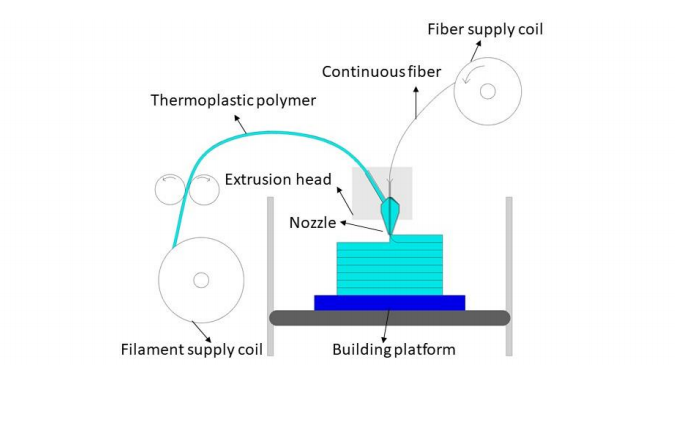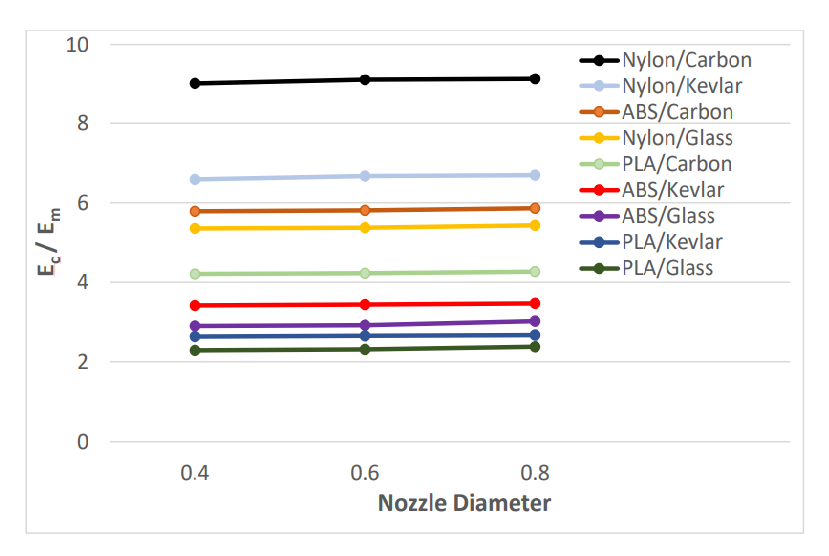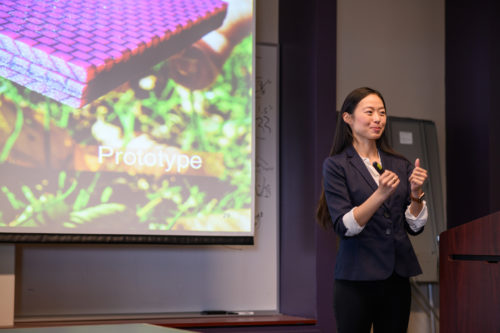3D Hangouts – Keyblades and Solder Jigs
Files, code, learn guide: https://learn.adafruit.com/kingdom-key-keyblade/
Project Video: https://youtu.be/aASsWYpQr8c
Filament for 3D Printers
https://www.adafruit.com/product/2080
Ultimaker 2+
https://www.adafruit.com/product/2673
Flashforge Inventor II
https://www.adafruit.com/product/3897
Hakko FX888D Soldering Station
https://www.adafruit.com/product/1204
3D Parts Library on GitHub
https://github.com/adafruit/Adafruit_CAD_Parts
Knurling Textures
https://www.youtube.com/watch?v=YSPfoBWR6lw
Screw Threaded Parts
https://www.youtube.com/watch?v=Hhkrg3WYH1g
Updated Guide: CPX Soundbox
https://learn.adafruit.com/circuitpython-sound-box/software
Cults 3D
https://cults3d.com/en/3d-model/game/yet-another-keyblade
Thingiverse
https://www.thingiverse.com/thing:3582947
MyMiniFactory
https://www.myminifactory.com/object/3d-print-92038
Updated Guide: CPX Soundbox
https://learn.adafruit.com/circuitpython-sound-box/software
PEI Flexi Plate
https://www.matterhackers.com/store/l/layerlock-powder-coated-pei-build-plate-steel-sheet/sk/MDP3RPRD
Mini Clamp Vise
https://www.amazon.com/gp/product/B0721SJ54L/
Timelapse Tuesday:
Paddli – Vandragon_de
https://www.thingiverse.com/thing:3559646
https://youtu.be/pgjLjCGMe4E
4/25/19 community makes
https://www.thingiverse.com/thing:3562862 IOT gmailbox remix
https://www.thingiverse.com/make:644332 prop maker saber
https://www.thingiverse.com/make:645464 cpx cases
3D Printing Projects Playlist:
https://www.youtube.com/playlist?list=PLjF7R1fz_OOWD2dJNRIN46uhMCWvNOlbG
3D Hangout Show Playlist:
https://www.youtube.com/playlist?list=PLjF7R1fz_OOVgpmWevin2slopw_A3-A8Y
Layer by Layer CAD Tutorials Playlist:
https://www.youtube.com/playlist?list=PLjF7R1fz_OOVsMp6nKnpjsXSQ45nxfORb
Timelapse Tuesday Playlist:
https://www.youtube.com/playlist?list=PLjF7R1fz_OOVagy3CktXsAAs4b153xpp_

Every Thursday is #3dthursday here at Adafruit! The DIY 3D printing community has passion and dedication for making solid objects from digital models. Recently, we have noticed electronics projects integrated with 3D printed enclosures, brackets, and sculptures, so each Thursday we celebrate and highlight these bold pioneers!
Have you considered building a 3D project around an Arduino or other microcontroller? How about printing a bracket to mount your Raspberry Pi to the back of your HD monitor? And don’t forget the countless LED projects that are possible when you are modeling your projects in 3D!
The Adafruit Learning System has dozens of great tools to get you well on your way to creating incredible works of engineering, interactive art, and design with your 3D printer! If you’ve made a cool project that combines 3D printing and electronics, be sure to let us know, and we’ll feature it here!
3D Printing Projects Playlist:
3D Hangout Show Playlist:
Layer by Layer CAD Tutorials Playlist:
Timelapse Tuesday Playlist:
Yet Another Keyblade #3DPrinting #KingdomHearts
Does the world need another Keyblade? This Keyblade is designed to be an easy-to-build kit with parts that screw fit together. No support material is required! 3D print and build your own Kingdom Key!
Download files in learn guide:
https://learn.adafruit.com/kingdom-key-keyblade
Use a brim where necessary. First, print out the tester-tube.stl twice and see how well they screw together – Adjust slice settings as necessary.
Need to change the diameter of the screw? How about using different heat set inserts? The parts are setup with user parameters, so it’s easy to change a value and automatically update the features in CAD. Tolerances use a “gap” to give clearance between mating surfaces – slight adjustments make big differences.

The fusion 360 source file is included and features original sketches and feature timeline along with easily editable user parameters. The parts can further be separated into small pieces for fitting on printers with smaller build volumes. Note: STEP file is included for other 3D surface modeling programs such as Onshape, Solidworks and Rhino.

The blade is comprised of seven parts. The collar joins the tubing to the handle. The pipe extension is printed twice to lengthen the tubing. The key wards slide into the v-slot on the pipe-key.stl part. The pipe-top-cap.stl part is designed to snap fit and locks on top.

The handle is comprised of six individual pieces. The cross guard requires M3 screws and heat set inserts. The end cap and connector parts are keyed and snap fit into registrations in the cross guard.
Layer by Layer CAD Tutorials
Knurling Textures
The grip in the handle features knurling texture that wraps around the cylinder. This design technique is achieved using the coil and circular pattern features in Fusion 360. Watch my Layer by Layer tutorial below for a deep dive on how to apply knurling to your parts.
https://www.youtube.com/watch?v=YSPfoBWR6lw
Screw Threaded Parts
Most of the tubing pieces feature screw-threaded ends allowing the parts to simply screw together. This uses the coil feature from Fusion 360 to create threads with custom size, pitch and height. Watch my Layer by Layer tutorial below for a deep dive on how to design parts with these features.
https://www.youtube.com/watch?v=Hhkrg3WYH1g
3D Printing Projects Playlist:
https://www.youtube.com/playlist?list=PLjF7R1fz_OOWD2dJNRIN46uhMCWvNOlbG
3D Hangout Show Playlist:
https://www.youtube.com/playlist?list=PLjF7R1fz_OOVgpmWevin2slopw_A3-A8Y
Layer by Layer CAD Tutorials Playlist:
https://www.youtube.com/playlist?list=PLjF7R1fz_OOVsMp6nKnpjsXSQ45nxfORb
Timelapse Tuesday Playlist:
https://www.youtube.com/playlist?list=PLjF7R1fz_OOVagy3CktXsAAs4b153xpp_

Every Thursday is #3dthursday here at Adafruit! The DIY 3D printing community has passion and dedication for making solid objects from digital models. Recently, we have noticed electronics projects integrated with 3D printed enclosures, brackets, and sculptures, so each Thursday we celebrate and highlight these bold pioneers!
Have you considered building a 3D project around an Arduino or other microcontroller? How about printing a bracket to mount your Raspberry Pi to the back of your HD monitor? And don’t forget the countless LED projects that are possible when you are modeling your projects in 3D!
University of Amsterdam: Researchers 3D Printing Grafts for Alveolar Ridge Augmentation
 At the University of Amsterdam, researchers may be seriously impacting reconstructive dentistry with a new process for strengthening the alveolar ridge after tooth loss or other more significant health issues. In ‘Marginal and internal fit of 3D printed resin graft substitutes mimicking alveolar ridge augmentation: An in vitro pilot study,’ authors C. C. Stoop, K. Chatzivasileiou, W. E. R. Berkhout, and D. Wismeijer explain a new design they have engineered for bone regeneration with 3D printed grafts.
At the University of Amsterdam, researchers may be seriously impacting reconstructive dentistry with a new process for strengthening the alveolar ridge after tooth loss or other more significant health issues. In ‘Marginal and internal fit of 3D printed resin graft substitutes mimicking alveolar ridge augmentation: An in vitro pilot study,’ authors C. C. Stoop, K. Chatzivasileiou, W. E. R. Berkhout, and D. Wismeijer explain a new design they have engineered for bone regeneration with 3D printed grafts.
As is so often the case with 3D printing, the key is in customization—allowing for patient-specific treatment with a graft meant to apply to both horizontal and vertical augmentation of the atrophic alveolar ridge. With CT scans converted into data for creating completely customized grafts, treatment time is expected to be reduced and there is a greater chance for regeneration. This innovation accentuates the growing reliance of implants and prosthetics in resolving issues with appearance and chewing after tooth loss. Historically, dental implants can be challenging without the ability to customize extensively—and even with more patient-specific treatment, there are many obstacles that can come into play regarding successful implantation and regeneration.

(A) Frontal view of a CAD mandibular model. (B) Lateroinferior view of a CAD large mandibular graft. (C) Frontal view of the graft fitted on the recipient site of the mandible. (D) Frontal CBCT view of the fitted graft.
The amount of bone volume left plays a large role in success, along with the types of defects involved—whether they are due to gum disease, cysts or tumors, teeth being pulled, or trauma to the mouth or jaw. There is also a range of different categories for defects, with the worst scenario being both horizontal and vertical defects occurring simultaneously.
“In situations of major changes in both vertical and horizontal bone dimensions, the placement of dental implants without an augmentation procedure could be very complicated or even impossible,” state the researchers.
Guided bone regeneration is usually a long process, and surgeons rely on a mixture of both biological and mechanical properties. Autogenous bone blocks are often used in surgeries, with grafts secured on the ridge or in between areas of pedicled and internal cancellous bone. The researchers state that success often relies on integration of the blocks as well as how well graft edges are smoothed, their stability, and their shape:
“The ideal biomaterial should be customized to fit easily on or into the corresponding bone defect and to allow proper fixation,” state the researchers. “The optimal shape of the graft may come with multiple advantages in terms of: (A) Faster surgical procedures, (B) Better healing of the grafted site, (C) Reduced risk of peri- and post-operative complications, (D) Higher success rates of the bone augmentation procedure and (E) Higher patient satisfaction.”
Shaping of bone grafts can be complex and requires an experienced hand. Without the proper expertise, healing may be unsuccessful.
“For this reason, there is a clinical need for customized biomaterials shaped to fit the patient’s bone defects,” said the authors.
With the options available through CAD design, bone defects can be scrutinized more closely, and customized, accurate grafts can be created before surgery. The entire process is more streamlined, surgical procedures are faster, and the patient has a better experience all around.
Six patients from the clinic of Oral Implantology and Prosthetic Dentistry at the Academic Centre for Dentistry Amsterdam (ACTA) were involved in the study, with the researchers evaluating cone beam computed tomography (CBCT) datasets from each, to be treated with implants and augmentation with bone blocks. Patients all presented as:
- Partially dentate
- Combined vertical and horizontal defect of the maxilla (three patients)
- Combined vertical and horizontal defect of the mandible (three patients)
3D reconstruction was completed for each patient’s jaw, with data imported into Meshmixer for design:
“The atrophic bone areas were defined separately for each jaw model in the edentulous part of the jaw. Because of the bone loss it is not possible to place an implant on this part of the jaw,” stated the researchers. “The customized grafts could be manually drawn directly on the surface of the 3D projects by fabricating the original shape of the jaw.”
The void interface set at 0mm between model and graft. The models (n = 6) were evenly divided in two groups, according to the number of missing teeth whether categorized as small defect or large defect. 3D printing was completed on a Form2 3D printer, with the following settings:
“Print resolution was set at 100 microns. To standardize the procedure, every graft and model was printed separately in the center of the build platform with a 135-degree build angle. The print supports were set on the external outline to prevent them interrupting the critical internal area. After printing, the objects were washed twice in two separate 90 percent isopropyl alcohol baths (10 min each) and were postcured for 30 minutes at 45° using a 405nm light box, according to the manufacturer’s protocol.”
The grafts were assessed in vitro, with each one serving as a match for the defect. The researchers state that large-defect grafts did not require any further refining, while small-defect grafts matched after some effort in manually smoothing undercuts. Results of the study were a success, supporting the idea that it is possible to both design and 3D print grafts for alveolar bone augmentation. The researchers state, however, that workflow for this process needs validation in a clinical setting; further, ‘proper vascularization’ must be ensured.
Materials must also be further analyzed for the following:
- Biocompatibility
- Osteoconductivity
- Surface porosity
- Surface chemistry
- Tissue bonding
- Material strength
- Degradation rate
“The marginal fit of the grafts was better than the internal fit, while the average void dimensions seemed to be correlated to the defect type of the graft. Further in vitro studies with 3D printable bone substitutes are needed for the validation of this digital workflow for alveolar bone augmentation,” concluded the researchers.
While 3D printing has permeated so many complex industrial applications, it may seem surprising to many that it could improve issues having to do with your teeth, mouth, and jaw, also—but just as the technology is becoming more affordable and accessible to others around the world, now so are better dental products and processes, including items like orthodontic aligners, removable partial dentures, and high-performance dental 3D printers available to labs.
[Source / Images: ‘Marginal and internal fit of 3D printed resin graft substitutes mimicking alveolar ridge augmentation: An in vitro pilot study’]
Istanbul: Thesis Student Explores Continuous Fiber Composites in FDM 3D Printing
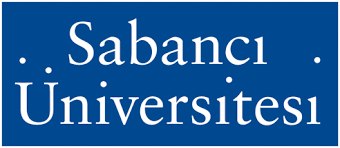 Although polymers are still the most popular materials used in 3D printing today, many users find themselves limited due to issues with inferior strength and rigidity. Creating composites is a good way to solve these problems, allowing manufacturers to enjoy the benefits of existing plastics while reinforcing them for better performance. In ‘Modelling and path planning for additive manufacturing of continuous fiber composites,’ Suleman Asif, a thesis student at Sabanci University (Instanbul), examines how the addition of continuous fibers can improve fabrication processes with thermoplastic polymers, and add greater strength in mechanical properties.
Although polymers are still the most popular materials used in 3D printing today, many users find themselves limited due to issues with inferior strength and rigidity. Creating composites is a good way to solve these problems, allowing manufacturers to enjoy the benefits of existing plastics while reinforcing them for better performance. In ‘Modelling and path planning for additive manufacturing of continuous fiber composites,’ Suleman Asif, a thesis student at Sabanci University (Instanbul), examines how the addition of continuous fibers can improve fabrication processes with thermoplastic polymers, and add greater strength in mechanical properties.
FDM 3D printing is mainly explored here. Issues with FDM 3D printing and these materials, however, tend to be centered around a lack of strength and inferior surface finish, build times that take too long, and inconvenient post-processing. In previous studies, researchers have used short fibers to strengthen thermoplastics, along with carbon nanotubes and fiber composites. Iron and copper have been added to ABS, and the addition of graphene fibers have been noted to add conductivity. In most cases, tensile strength increased but there were issues with interfacial bonding and porosity.
The use of short fibers and nanofibers has been explored, but Asif explains that such additions are better for applications like aerospace or automotive. With the use of continuous fiber reinforced thermoplastic (CFRPT) composites, though, both ‘ingredients’ are extruded at the same time from one nozzle and show significant improvement and strengthening.
In a different study, researchers loaded both thermoplastic polymer and continuous fibers into the nozzles for FDM printing, with PLA and continuous fibers (some samples consisted of carbon fibers, and some with jute) added separately to another nozzle. While carbon did offer improvements in strength, the jute was not helpful due to ‘degradation of fiber matrix interactions.’ Other tests showed that PLA reinforced with modified carbon showed higher tensile and flexural strength values, demonstrating how powerful ‘preprocessing’ can be.
“Furthermore, a path control method was developed to print complex geometries including hollow-out aerofoil, a unidirectional flat part, and a circular part,” states Asif.
Previous methods also used ABS and carbon fibers, with two different nozzles and the carbon fibers contained in between the upper and bottom layers of the plastic.
“The process worked in such a way that after printing of lower layers of ABS, carbon fibers [were] thermally bonded using a heating pin before the upper layers of ABS were printed. In addition, some samples were also thermally bonded using a microwave to understand the difference between both methods,” said Asif.
In comparison to pure ABS, the results demonstrated significant strengthening in mechanical properties.
“In addition, it was observed that there was not much difference between the results obtained from test specimen thermally bonded by heating pin and microwave oven. So, it was concluded that microwave could be successfully used for thermal bonding between matrix and other fiber layers.”
Researchers also attempted to reinforce PLA with aramid fibers, showing ‘notable enhancement.’ Another test evaluated a raw material of commingled yarn, containing polypropylene (PP):
“A cutting device was also incorporated in the system, and a novel deposition strategy was developed. The results showed a remarkable increase in flexural modulus as compared to pure PP. However, the void presence in the samples was a major issue in the proposed technique.”
Overall, in reviewing the multitude of studies performed, Asif saw potential for improving mechanical strength, but realizes a need for control of the fiber position within the nozzle to reduce adhesion issues.
“The system also needs to be designed in such a way that the fiber lies directly in the center of the nozzle to ensure that the thermoplastic polymer is properly diffused into the fiber from all sides using a coaxial printing process in which more than one materials are extruded simultaneously through a nozzle along a common axis,” says Asif.
The researcher also began examining various path planning processes for acquiring point locations that guide the extruder in depositing materials for filling layers. Asif discovered that most suggested path planning was limiting as it only worked for specific complex structures—some of which would not be appropriate for fabrication of CFRTP composites. Asif suggests that as the algorithms stand currently, there would be problems due to:
- Under-deposition (typically called underextrusion in FDM)
- Over-deposition
- Movement of the extruder to next layer after filling one layer
“Hence, there is need of a continuous path planning method that can generate a deposition path without any under-deposition and over-deposition, and with better moving strategy from one layer to the next one,” concludes Asif.
“As a future work, a screw-based mechanism can be designed and developed for 3D printing of CFRTP composites. It would allow the continuous input of thermoplastic pallets and, therefore, parts with large dimensions can be printed. In addition, a topology optimization based algorithm can be developed to control the number of layers containing fibers to produce optimized lightweight parts depending upon specific load applications.”
3D printing offers an infinite amount of opportunity for designers and engineers around the world, immersed in creation—whether that is industrial, artistic, or completely scientific. There is an immense amount of energy centered around this technology that just continues to grow in popularity, and especially as users continue to refine the processes and materials. Composites are often used to strengthen existing methods and materials, whether in making structural parts for aerospace, regulating electrical composites, or studying conductivity and different techniques for fabrication. Find out more about the use of continuous fiber composites here.
What do you think of this news? Let us know your thoughts! Join the discussion of this and other 3D printing topics at 3DPrintBoard.com.
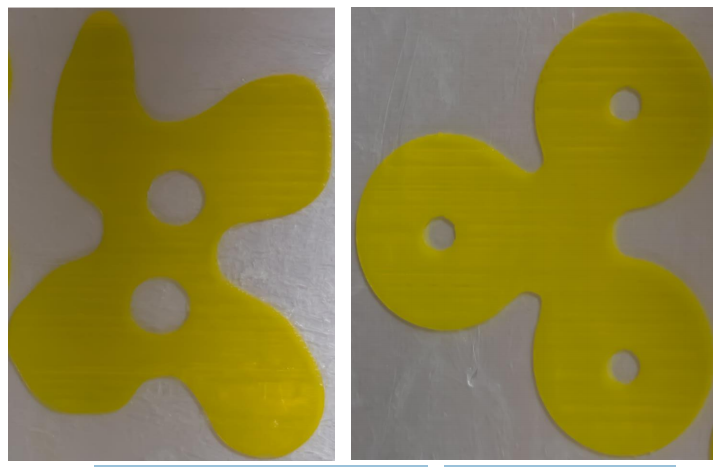
Implementation of the developed algorithm on a commercial printer (a) Complex concave geometry (b) Fidget spinner
[Source / Images: ‘Modelling and path planning for additive manufacturing of continuous fiber composites’]
Restoration of Porsche 928 component wins Weerg 2019 3D Printing Project Award
Dassault Systèmes financial results show double digit software revenue growth in Q1 2019
Parking Pal is an ultrasonic distance meter #3DThursday #3DPrinting

jaygreco shares:
The Parking Pal is an ultrasonic distance meter to help with parking in the garage. It’s based on the HC-SR04 and an Arduino Pro Micro. It includes a NeoPixel interface (NeoPixel stick, by default) to display distance, and an integrated buzzer to beep when you’re getting too close! It’s modular, using a simple USB connector.
download the files on: https://www.thingiverse.com/thing:3448336

Every Thursday is #3dthursday here at Adafruit! The DIY 3D printing community has passion and dedication for making solid objects from digital models. Recently, we have noticed electronics projects integrated with 3D printed enclosures, brackets, and sculptures, so each Thursday we celebrate and highlight these bold pioneers!
Have you considered building a 3D project around an Arduino or other microcontroller? How about printing a bracket to mount your Raspberry Pi to the back of your HD monitor? And don’t forget the countless LED projects that are possible when you are modeling your projects in 3D!
Pokemon themed Card holder #3DThursday #3DPrinting

Afong0212 shares:
DIY Pokemon game card storage ball,remember need install 4 magnet(diameter=9mm, thickness=2mm) for push button and cover lift used.
download the files on: https://www.thingiverse.com/thing:3503269

Every Thursday is #3dthursday here at Adafruit! The DIY 3D printing community has passion and dedication for making solid objects from digital models. Recently, we have noticed electronics projects integrated with 3D printed enclosures, brackets, and sculptures, so each Thursday we celebrate and highlight these bold pioneers!
Have you considered building a 3D project around an Arduino or other microcontroller? How about printing a bracket to mount your Raspberry Pi to the back of your HD monitor? And don’t forget the countless LED projects that are possible when you are modeling your projects in 3D!
UC Berkeley Researcher Receives Award from Johnson & Johnson for Smart 3D Printer
In 2015, Johnson & Johnson launched the WiSTEM2D (Women in Science, Technology, Math, Manufacturing and Design) program in order to increase the representation of women in the scientific and technical fields, along with the development of female leaders. The unique, multifaceted program is meant to engage women at three important development phases of their lives: youth (ages 5-18), the university graduate level, and in their professional careers.
J&J began offering its WiSTEM2D Scholars Award in 2017, which is meant to fuel development of female leaders in STEM2D, as well as add to the talent pipeline. The award supports the winners’ research, while also inspiring other women to go down similar career paths in their own STEM2D fields. Now in its third year, nominations for the Scholars Award were accepted from female scholars in each of the STEM2D disciplines: Science, Technology, Engineering, Math, Manufacturing and Design. An independent Advisory Board was set up to choose the winners from over 400 international applicants, and the six winners were recently announced.
“Through this Award and other programs, Johnson & Johnson is working to increase the participation of women in STEM2D fields worldwide. We want to nourish the development of women leaders building a larger pool of highly-trained, female researchers so that they can lead STEM2D breakthroughs in the future,” said Cat Oyler, Vice President, Global Public Health, Tuberculosis, Johnson & Johnson and WiSTEM2D University Sponsor.
In addition to being recognized at an awards ceremony tonight at Johnson & Johnson’s worldwide headquarters in New Jersey, the winners – all assistant or associate academic professors, or the global equivalent of such – will each receive $150,000 in research funding, as well as three years of mentorship from Johnson & Johnson.
Just like Johnson & Johnson, we here at 3DPrint.com have also worked hard to highlight the 3D printing-related accomplishments of young girls and women in STEM and tech fields. That’s why I was thrilled to learn that one of this year’s winners is focused on manufacturing and 3D printing.
Each Scholars Award winner represents one of the STEM2D disciplines:
- Katia Vega, PhD, Assistant Professor of Design, UC Davis: while she’s already using the human body as a source of wearable technology, she’ll move on to experimenting with interactive skin and biosensors.
- Ronke Olabisi, PhD, Assistant Professor of Biomedical Engineering at Rutgers University: developing a new hydrogel that can be placed over an injury and constantly deliver insulin and stem cell growth factors for faster skin and tissue growth.
- Grace X. Gu, PhD, Assistant Professor of Mechanical Engineering at University of California, Berkeley: developing a smarter, more efficient 3D printer that can self-correct during a print job.
- Rebecca Morrison, PhD, Assistant Professor of Computer Science at University of Colorado, Boulder: identifying flexible algorithms that can run calculations on shifting variables more quickly and accurately.
- Naama Geva-Zatorsky, PhD, Assistant Professor of Medicine, Technion-Israel Institure of Technology: studying the interactions between the immune system and gut microbes.
- Shengxi Huang, PhD, Assistant Professor of Electrical Engineering, The Penn State University: developing one device to measure potential disease-causing biomolecules, like cancer cells.
Gu, who joined the UC Berkeley faculty in 2018, is looking to address the limitations in manufacturing and materials design with her smart, self-correcting 3D printer.
“I am really excited to build my research group at Berkeley, meet and mentor undergraduate and graduate students, teach foundational mechanical engineering classes, collaborate with exceptional faculty members within and outside the university, and work on 3D-printing projects with students to create a better tomorrow,” Gu said when she began her job at the university.
Gu received her BS in Mechanical Engineering from the University of Michigan in 2012, picking up an MS from MIT two years later and remaining at MIT to earn her PhD in Mechanical Engineering in 2018. According to UC Berkeley, her research interests include harnessing the power of “tools such as advanced computational analysis, machine learning and topology optimization to revolutionize the field of smart additive manufacturing.”
In her research group at the university, the work is focused on bio-inspired materials.
“The big goal is to develop materials that are inspired by nature, like seashells and bones, and discover new material combinations never before manufactured. These biomaterials possess remarkable mechanical properties that are yet to be replicated by man-made counterparts,” Gu said. “This way we can make implants, for instance, tailored to each individual with the properties necessary for structural integrity of the part—and push the frontiers of additive manufacturing.”
The work for which she received her WiSTEM2D Scholars Award is centered around building a smarter 3D printer. As Berkeley Engineering put it, she trained “a model for a smart 3D printer that can perform predictive diagnostics to ensure optimal printing quality.”
Gu is taking computer science concepts and applying them to manufacturing in order to create her smart 3D printer. The ultimate goal of this particular research is develop a 3D printer that’s able to correct mistakes by itself while working, while also using a wider range of materials in order to more quickly and reliably produce objects like tougher bike helmets and stronger prosthetics.
Discuss this story and other 3D printing topics at 3DPrintBoard.com or share your thoughts in the Facebook comments below.
[Images: Johnson & Johnson unless otherwise noted]

